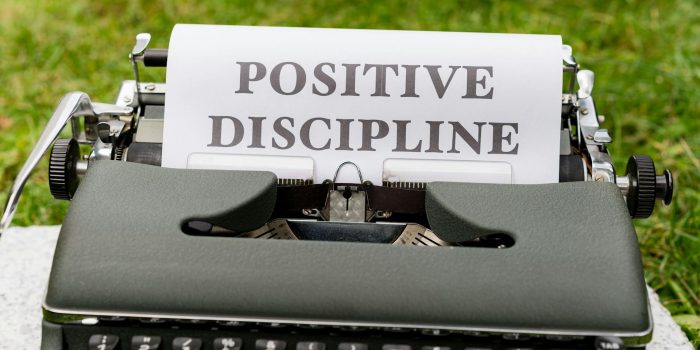Definition of positive discipline
The idea of discipline being synonymous with punishment is ingrained in our psyche. The first thing we think of when we hear the word “discipline” is usually something negative. However, the word discipline originates from the Latin word ‘disciplina’ which means teaching, which in turn comes from ‘discipulus’ which literally translates to pupil. For whatever reason, over the years, discipline has gone from meaning “to teach” to “to punish”! Today we explore “positive discipline” an idea that focuses on reverting things back to their roots.
The following are ideas about positive discipline:
- When students do something wrong, instead of punishing them, teachers teach and guide them to set the behavior right.
- Positive discipline is non-violent and is respectful of the student. It is an approach to teaching that helps students succeed, gives them information, and supports their growth and their learning.
- Positive discipline is based on students’ rights to healthy development, protection from violence and participation in their learning and environment.
- Positive discipline is a tool for teachers and community members to use to assist them in managing students’ behavior without abusing them emotionally, physically, socially, mentally or spiritually. The way students’ learn and develop differs, because no two students are the same. Students grow and develop patterns but at their own individual pace. There are set ages and stages for students development.
To sum up, ‘Positive Discipline in the classroom’ is, according to Nelsen (2017), a program that teaches important social and life skills, in a manner that is respectful to both the adults and the students in the situation; raising young people to be responsible, respectful, and resourceful members of their community. It is based on the theory that students who have a sense of connection to their community (home and school) and whose input is regarded as meaningful are less likely to engage in misbehavior.
To be successful members of the community, students need to be taught the necessary social and life skills. Positive Discipline is based on the understanding that discipline must be taught and that discipline teaches.
Understanding discipline versus punishment
Punishment is an action or penalty that is imposed on a student for misbehaving or breaking a rule. However, the impact on students can be very harmful, from inducing physical or emotional pain to not being effective in reducing future misbehaviors.
Punishment is used to control the behavior of students, in two
different ways: negative discipline involves verbal disapproval and reprimands; and, corporal punishment involves severe emotional or physical pain. Unfortunately, both forms of punishment focus on misbehavior and may do little or nothing to help a student behave better in the future. Moreover, the student learns that the adult is superior, and the use of force – be it verbal, physical, or emotional – is acceptable, especially over younger, weaker persons. This lesson can lead to incidents of bullying and violence in school, where older students dominate younger ones and force them into giving the bullies money, food, homework, or other valuable items.
Furthermore, rather than leading to a student with inner control, such punishment makes the student angry, resentful, and fearful. It also causes shame, guilt, anxiety, increased aggression, a lack of independence, and a lack of caring for others, and thus greater problems for teachers and other students.
Alternatively, positive discipline is the practice of training or teaching a student to obey the code of behavior or rules in both the short and long term. Instead of controlling the behavior of students, teachers can use positive discipline to develop a student’s behaviors through self-control and making positive choices.
The following table summarizes some of the positive features of discipline as
opposed to what a punishment-oriented environment is like:
| Feature | Positive Discipline | Punishment |
| Approach | Giving students positive alternatives | Being told only what not to do |
| Motivation | Acknowledging or rewarding efforts and good behavior | Reacting harshly to misbehavior |
| Rule Adherence | When students follow rules because they are discussed and agreed upon | When students follow rules because they are threatened or bribed |
| Guidance | Consistent, firm guidance | Controlling, shaming, ridiculing |
| Respect | Positive, respectful of the student. | Negative and disrespectful of the student. |
| Physical/Verbal Violence | Physically and verbally non-violent | Physically and verbally violent and aggressive |
| Consequences | Logical consequences that are directly related to the misbehavior | Consequences that are unrelated and illogical to the misbehavior |
| Amends | When students make amends when their behavior negatively affects someone else | When students are punished for hurting others, rather than being shown how to make amends |
| Individualization | Understanding individual abilities, needs, circumstances, and developmental stages | Inappropriate to the student’s developmental stage of life; individual circumstances, abilities, and needs are not taken into consideration |
| Self-Discipline | Teaching students to internalize self-discipline | Teaching students to behave well only when they risk getting caught doing otherwise |
| Parent-student Interaction | Listening and modeling | Constantly reprimanding students for minor infractions causing them to tune us out (ignore us; not listen to us) |
| Mistakes | Using mistakes as learning opportunities | Forcing students to comply with illogical rules “just because you said so” |
Criteria for positive discipline
The following are the criteria for an effective positive discipline:
- Helps students feel a sense of connection (Belonging and significance).
- Is mutually respectful and encouraging (Kind and firm at the same
time.). - Is effective long – term (Considers what the student is thinking, feeling, learning, and deciding about himself and his world – and what to do in the future to survive or to thrive.).
- Teaches important social and life skills (Respect, concern for others, problem solving, and cooperation as well as the skills to contribute to the home, school or larger community.).
- Invites students to discover how capable they are (Encourages the constructive use of personal power and autonomy.
Importance of positive discipline for students’ behaviour
The purpose of positive discipline is to teach in such a way that students can develop their inner guidance system so they can function responsibly by themselves. Because adults won’t always be around to tell students what to do, we must instill inner discipline and help students develop the ability to think, judge, and make decisions on their own.
Youth need to learn self-discipline with little issues, so they have the experience and confidence to deal with larger issues later. This process takes time, but the end product is worth the investment. Using positive discipline techniques help teachers to overcome the many challenges in the classroom and help students learn and make better choices in
the future.
In fact, using positive discipline in the classroom not only increases academic success in the classroom but provides many other benefits, including:
- Students show respect for the teacher
- Students are on task and engaged
- Less disciplinary measures are needed
- Fewer suspension and expulsions
- Students see rules as fair
- Attendance improves











